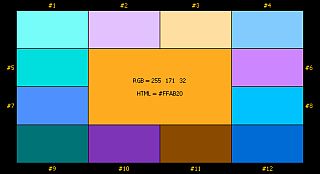Why is sRGB so different in color space?

Since there are differences in the appearance of colors between observers, in the digital world, in order to quantify colors, red (R), green (G), and blue (B) are set to values from 0 to 255, respectively. The format of ' color space ' is adopted. PhotoSauce, a high-quality image resizing application, explains why only 'sRGB ' is different in such a color space.
What Makes sRGB a Special Color Space? --PhotoSauce Blog
https://photosauce.net/blog/post/what-makes-srgb-a-special-color-space
Section 3.1 of the sRGB specification states, 'Between the tristimulus values that indicate the values of the three parameters used in the CIE 1931 color space and the 8-bit chromaticity coordinates that indicate the values of the three parameters used in RGB. Encoding conversion provides a unique way to express the optimum color tone when viewed by the reference observer under the reference display conditions. ' Regarding this sentence, Photo Sauce points out that the following three points are important.
-SRGB is not determined by the color space in the abstract sense, but by the chromaticity coordinates of RGB.
-The encoding method described in the specifications is unambiguous and the interpretation is unique.
-Each chromaticity coordinate of sRGB is expressed in 8 bits (0 to 255).
The problem that PhotoSauce has been hitting for a long time when converting the encoding of the chromaticity coordinates of sRGB and the tristimulus value of the CIE 1931 color space is that 'when trying to convert the encoding of values with four decimal places or less, there is a gap'. After investigating this point, I found that section 4.1 of the specification of the color space 'scRGB ', which extends sRGB to a range other than the colors visible to the human eye, contains the following sentence. ..
Encoding conversion provides a unique way to convert the chromaticity coordinates of the tristimulus values in the CIE 1931 color space and the 16-bit values of scRGB.
The difference that was adopted in sRGB earlier was '8 bits' consisting of numerical values from 0 to 255, but that adopted in scRGB is '16 bits' composed of 0 to 65535. Exists. However, according to PhotoSauce, actually converting the three parameters of scRGB to the three parameters of the CIE 1931 color space causes a shift of four digits after the decimal point, similar to the conversion from sRGB to the CIE 1931 color space. Since it turned out, 'In encoding conversion in normal color space, it is okay for the value of chromaticity coordinates to have any number of digits after the decimal point, but in the case of encoding conversion from sRGB, the correct value must be rounded after 4 digits. I found that I couldn't get it. '
According to PhotoSauce, this limit on the number of decimal places suggests that sRGB refers to the primary colors of Rec. 709 in the reference display, but the actual values are inaccurate, and CIE 1931. It is said that the D65 light source, which is the standard light source used for such purposes, has a secondary problem that the tristimulus values are rounded. PhotoSauce states that 'the display environment for reference specified by the color triangle and the actual primary colors defined by the encoding of the specification should be distinguished, but they are often confused in Wikipedia summaries and the like.'
Related Posts:
in Design, Posted by darkhorse_log







